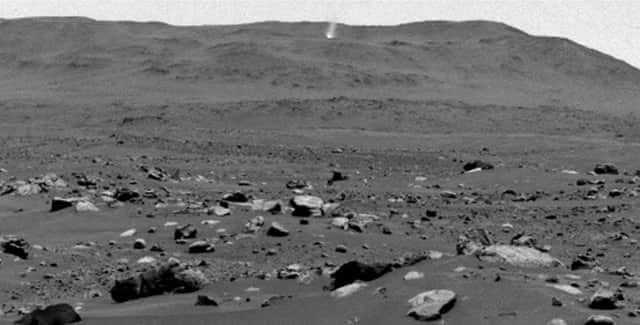Perseverance Rover: mile-high dust devil observed on Mars
and live on Freeview channel 276
The Perseverance Rover on Mars has spotted a 1.2-mile-high dust devil moving across the landscape.
The lower part of the dust devil was spotted by the rover as part of an atmospheric exploration of Jezeros Crater.
Advertisement
Hide AdAdvertisement
Hide AdIt was seen moving east to west at about 12 mph along Thorofare Ridge on 30 August.


“Much weaker and generally smaller than Earth’s tornadoes, dust devils are one of the mechanisms that move and redistribute dust around Mars,” explained NASA’s Jet Propulsion Laboratory (JPL), a robotic space exploration research and development centre in California.
“Scientists study them to better understand the Martian atmosphere and improve their weather models.”
Data analysis revealed the mile-high dust devil was about four kilometres (2.5 miles) away.
Advertisement
Hide AdAdvertisement
Hide AdIt had a width of 60 meters (200ft), and its height was estimated through its shadow. The lower 118 meters (387 feet) was visible in the camera frame.
“We don’t see the top of the dust devil, but the shadow it throws gives us a good indication of its height,” said Mark Lemmon, a planetary scientist at the Space Science Institute in Boulder, Colorado, and a member of the Perseverance science team.
“Most are vertical columns. If this dust devil were configured that way, its shadow would indicate it is about 1.2 miles (2 kilometres) in height.”
Dust devils, which also occur on Earth, occur when rising cells of warm air mix with descending columns of cooler air.
Advertisement
Hide AdAdvertisement
Hide AdJPL added: “The Martian versions can grow to be much larger than those found on Earth. While they are most prominent during the spring and summer months (Mars’ northern hemisphere, where Perseverance is located, is currently in summer), scientists can’t predict when they’ll appear at a specific location.
“So Perseverance and its fellow NASA Mars rover Curiosity routinely monitor in all directions for them, taking images in black-and-white to reduce the amount of data sent to Earth.”
Comment Guidelines
National World encourages reader discussion on our stories. User feedback, insights and back-and-forth exchanges add a rich layer of context to reporting. Please review our Community Guidelines before commenting.
